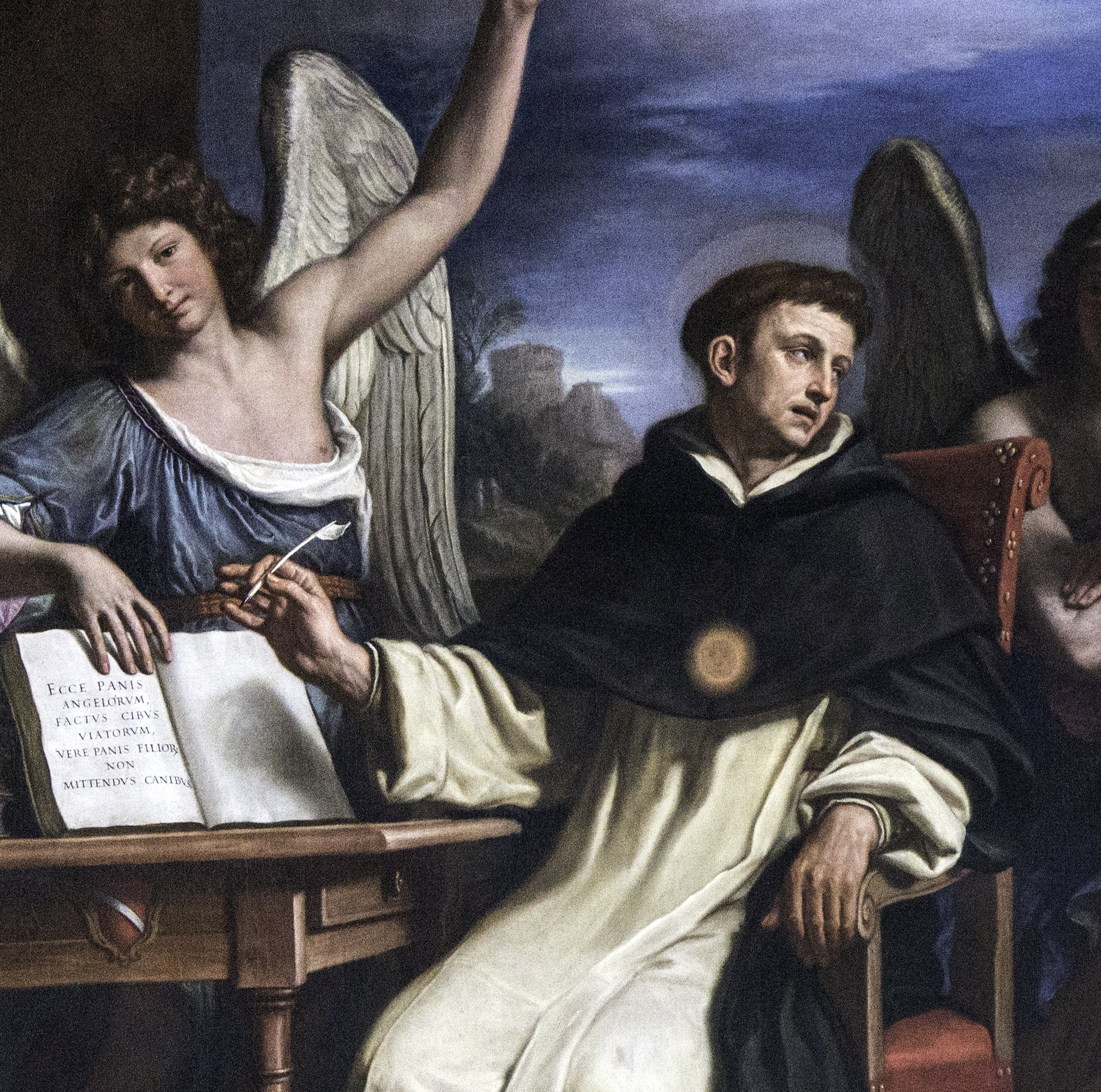Chapter 43: The Treatise On The Church¶
Throughout the Summa we find the lineaments of a treatise on the Church, a treatise which became an actuality against Protestant errors. But this later mode of treatment, being predominantly exterior and apologetic, led to a disregard for the theological treatment, properly so called, of the inner constitution of the Church. Such a treatise has its normal place after the treatise on Christ the Redeemer and His sacraments. 987 Here lies the road pointed out by St. Thomas.
In his treatise on Christ’s grace of headship 988 he calls the Church the mystical body, which includes all men in the measure of their participation in the grace that comes from their Savior. 989.
In his treatise on faith 990 he finds in the Church a doctrinal authority that is plenary and infallible, extending even, as in canonizing her saints, not merely to dogmatic truths, but also to dogmatic facts. The pope has this power in its fullness, and can even, against heretics, define the exact meaning of the articles of faith.
He compares the relation between Church and state to that between soul and body. 991 The Church has power to annul the authority of unbelieving or apostate princes, a power extending to excommunication. 992 This normal pre-eminence of the Church derives from her superior goal, in virtue of which princes themselves are bound to obey the sovereign pontiff as vicar of Jesus Christ.
In the fifteenth century the disciples of St. Thomas clung closely to the saint’s formulas. Special distinction here belongs to Torquemada, 993 whose work is a careful study of the notes of the Church, of the union in the mystical body between head and members, of the Church’s indirect power in matters temporal. 994.
- 987
Thus Cardinal Billot and Father Gardeil, and more recently Ch. Journet, in his work, L’Eglisc du Verbe incarne, Vol. 1, Desclee, De Brouwer (Bruges, 1943).
- 988
Christus ut caput ecclesiae: IIIa, q. 8.
- 989
Ibid.: a. 3.
- 990
IIa IIae q. 1, a. 10; q. a, a. 6, ad 3; Quodl. IX, a. 16.
- 991
Ia IIae q. 60, a. 6, ad 3.
- 992
IIa IIae, q. 10, a10; q. 12, a. 2.
- 993
Turrecremata, Summa de ecclesia Cf. E. Dublanchy, “Turrecremata, et la pouvoir du pape dans les questions temporelles,” in Rev. thom.: 1923, pp. 74-101.
- 994
Other noteworthy works in this field: Cajetan, De auctoritate papae et concilii; Cano, De locis theologicis. More recently: De Groot, O. P.: Summa de ecclesia, 3rd ed.: Ratisbonne, 1906; Schultes, O. P.: De ecclesia catholica, Paris, 1926; Garrigou-Lagrange, De revelatione per eccl. cath.: proposita, Rome, 3rd ed.: 1935; A. de Poulpiquet, O. P7 L’Eglise catholique, Paris, 1923.
